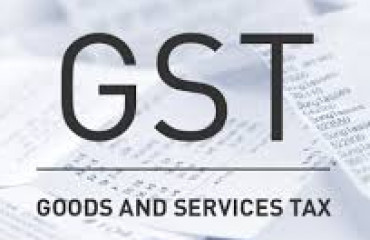
Budget showcases the next phase of the tax administration guided by digitisation and integration of central and state-level systems through IT bridges and removal of overlapping compliances.
Budget showcases the next phase of the tax administration guided by digitisation and integration of central and state-level systems through IT bridges and removal of overlapping compliances.
However, as far as GST is concerned, the Finance Minister has not given any indication on the proposed changes in compliance processes and the preparedness of technology infrastructure. As one studies the fine print of the Finance Bill, the idea of 'trust-based governance' seemed to have not been adequately expressed or given effect to, especially if one were to read the dispensation of the 'two-way communication' in the return filing.
The 'credit matching' concept in GST has been an ambitious aspiration since day one. The two-way communication process between the supplier and recipient was a noble thought, which if successfully implemented would have taken us a long way ahead on the GST journey. When credit matching was introduced in 2017, it appeared as a picture-perfect plan, but challenges faced in the implementation continue to persist both for taxpayers and tax administrators alike.
As a result, sections 42 and 43 of the CGST Act and associated rules to set in motion the 'credit matching' came to be dropped mid-way through the GST journey. To effectuate this process, Section 43A was proposed to be introduced, which sought to allow the recipient to verify, validate, modify, or delete the details. A draft note was also released on the GST portal for its implementation and compliance architecture. However, the technological inadequacies and challenges which had haunted the industry in the past continue to remain a barrier in the implementation of this ambitious project.
While technical limitations and complications defied smooth implementation, the Government's resolve to allow ITC based on credit matching led to insurmountable complications to the industry and the introduction of Rule 36(4) to restrict GST credits up to 5% of eligible credit if the supplier fails to comply, lead to significant cash flow constraints to the taxpayer.
With the proposed omission of sections 42, 43 and 43A, the redundant provisions have been ditched after 5 years. However, the removal of the old and the introduction of the new processes casts an obligation on the recipient to ensure supplier compliance before taking tax credits. The amendment even proposes to levy interest on the recipient for the mistake/error on the part of the supplier.
This seems to be in counter to decisions of various Courts where it was held that recovery of ITC from the recipient cannot be sought without first exhausting the remedy of recovery from the suppliers, who collected GST from the recipient but failed to remit the same to the Government. The amendment seems to reopen the controversy for fresh judicial review if the taxpayer were to challenge this as draconian, especially in the absence of any locus standi for the recipient to insist the supplier t ..
Section 38 proposes that an auto-generated statement would be generated by the government/portal, capturing the details of inward supplies on which credit is available and inward supplies on which credit cannot be taken, on account of the supplier being in default or non-compliance. The modalities in the implementation of this process have not been made available. Many clarifications are expected before the implementation of this revised credit availment process.
The views of the industry and trade should be sought to understand the challenges of day-to-day business operations. While the Government is hard-pressed to initiate stringent measures to curb the menace of fake invoices, it cannot lose sight of the fact that law-abiding taxpayers are saddled with additional burdens. If the experience of the past 5 years is any indication, the success of the newly introduced process would majorly depend on the technological capabilities and capacity creation. One major respite in this entire proposal seems to be the facility to re-avail tax credit if the supplier eventually complies, though it is unclear whether interest paid by the taxpayer for the default of the supplier would be returned.
The government has time and again emphasised its commitment to 'minimum government & maximum governance'. While the Finance Minister underscored the need for "right balance between facilitation and enforcement has engendered significantly better compliance" in her budget speech, it remains to be seen how the proposed amendments promote minimum hardship and ease of compliance for taxpayers.
